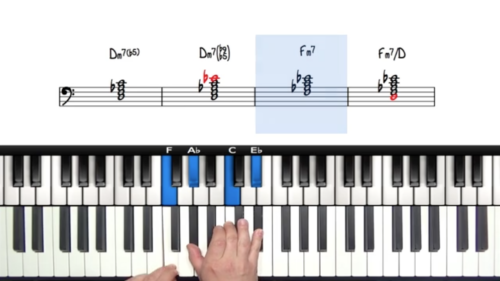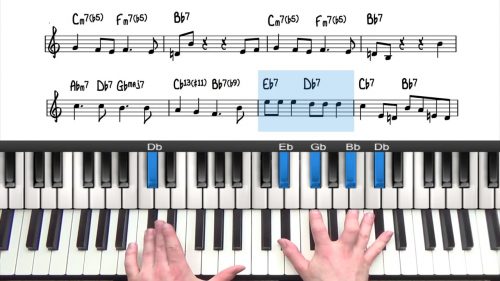How To Play Like Bill Evans
In this lesson we will take a look into one of the most influential pianists in history, Bill Evans.
His harmonic approach, use of wide variety of voicings from block chords to 4th voicings, and modern way of interpreting traditional jazz repertoire makes him one of the most important jazz piano players to study.
Bill Evans’ History & Life
Bill Evans was born August 16 1929, and died September 15 1980. He was classically trained, studied piano, composition and flute at Southeastern Louisiana University, and later on, after a 3 year stay in the U.S army, he continued his studies at the Mannes School of music in NYC.
Bill Evans & Miles Davis
After moving to New York, he worked with many notable musicians, George Russell, Buddy DeFranco, Cannonball Adderley, just to name few.
In the year 1958 he started working with Miles Davis’ band, and appears on the album Kind Of Blue, which is considered the best-selling jazz album of all time, and one of the most important early modal recordings.
The Bill Evans Trio
Most of his career Bill Evans worked in a trio setting, releasing tens of albums, which modernised the jazz piano trio.
On his recordings you can hear how the bass and drums have more collective rhythmic and harmonic freedom than the piano trios before.
Most notable of these trios is the late 1950s – early 60s trio with Scott Lafarro on bass and Paul Motian on drums.
“April In Paris” Analysis
For this we will analyse the first chorus of April in Paris, from his solo piano recording called The Solo Sessions vol 1, recorded in 1963, and released 64.
This recording shows a variety of voicings and reharmonisations that are typical to Bill Evans’ style and will give you a plenty of material to work with.
Practice Tips
-
Pay attention to Bill Evans' subtle use of inner voice movement in his chords and progressions. For more information on inner voices, check out the related lessons above.
-
Bill Evans had large hands and so he was able to play large intervals in his left hand. For many of us this is beyond our reach, and so instead fragment the notes of the voicing, or rearrange them within a smaller section of the piano.
-
This lesson is an analysis of Bill Evans solo piano playing. If you're interested in his trio performances, check out the albums "Portrait In Jazz" and "Waltz For Debby".






